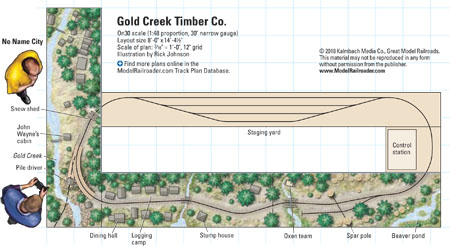
Name: Gold Creek Timber Co. Layout owners: Loren Neufeld, Jim Lemmond Scale: On30 (1:48 proportion, 30″ narrow gauge) Size: 8′-0″ x 14′-41⁄2″ Prototype: freelanced Locale: Western redwood forest Style: portable display layout Mainline run: 38 feet Minimum radius: 19″ Minimum turnout: no. 5 Maximum grade: 1 percent Benchwork: plywood tabletop Height: 64″ Roadbed: none (track […]
Read More…
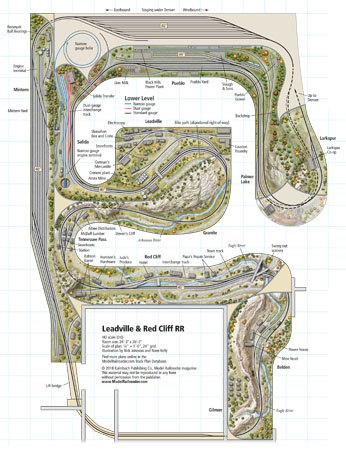
Name: Leadville & Red Cliff RR Layout owner: Bill Brown Scale: HO and HOn3 (1:87.1) Size: 25 x 40 feet Prototype: Union Pacific, BNSF Ry. (lower level); Denver & Rio Grande Western, Rio Grande Southern, and Silverton RR narrow gauge lines (upper level) Locale: central Colorado Era: present day (lower level), 1949 (D&RGW and RGS), […]
Read More…

Name: Sierra Pintada & Western RR Layout owner: Willem Van der Hoeven Scale: HO (1:87.1) Size: 10′-0″ x 34′-10″ Prototype: freelanced, inspired by old-time western United States railroads Locale: Arizona Era: 1880s Style: shelf Mainline run: 40 feet Minimum radius: 24″ Minimum turnout: no. 4 Maximum grade: 2 percent Benchwork: shelf on consoles Height: 40″ […]
Read More…
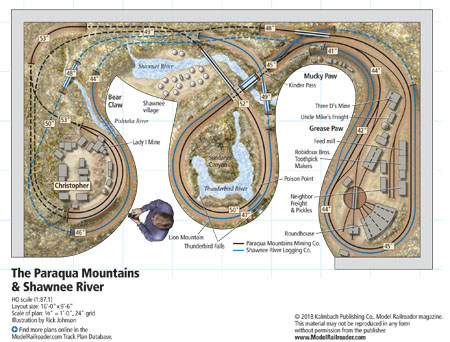
Name: Paraqua Mountains & Shawnee River Layout owner: Pat Driscoll Scale: HO (1:87.1) Size: 9′-6″ x 16′-0″ Prototype: freelance Locale: southwestern United States Era: late 1800s to early 1900s Style: walk-in Mainline run: 164 ft. Minimum radius: 20” Minimum turnout: no. 5 Maximum grade: 7 percent Benchwork: open grid Height: 43″ to 53″ Roadbed: Homasote […]
Read More…
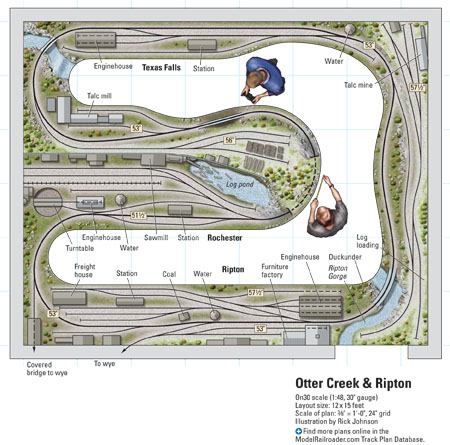
Name: Otter Creek & Ripton Layout owner: David McLeod Scale: On30 (1:48, 30″ gauge) Size: 12 x 15 feet Theme: freelanced New England narrow gauge short line Locale: central Vermont Era: 1912 Style: around-the-walls with peninsula Mainline run: 61 feet Minimum radius: 24″ (main), 18″ (branch) Minimum turnout: Peco medium radius Maximum grade: 4.5 percent […]
Read More…
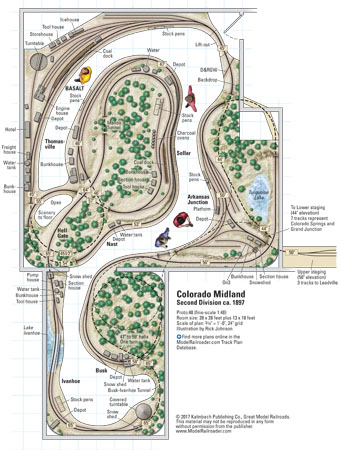
Name: Colorado Midland Ry. Layout owner: Andrew Dodge Scale: Proto:48 (O fine scale) Size: 28 x 28 feet plus 13 x 18 feet Prototype: Colorado Midland Locale: western Colorado Era: 1897 Style: single-deck walkaround Mainline run: 300 feet Minimum radius: 46″ Minimum turnout: no. 6 Benchwork: open grid Height: 44″ to 63″ Roadbed: 1⁄2″ plywood […]
Read More…
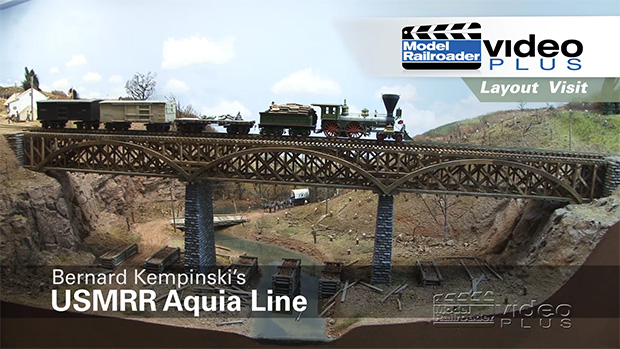
Having trouble viewing this video? Please visit our Video FAQ page In this Model Railroad Video Plus exclusive layout video, you’ll tour Bernie Kempinski’s O scale U.S. Military Railroad Aquia Line, a model railroad that’s set right in the thick of America’s Civil War. As Bernie guides his battery-powered steam locomotives over the 130-foot […]
Read More…
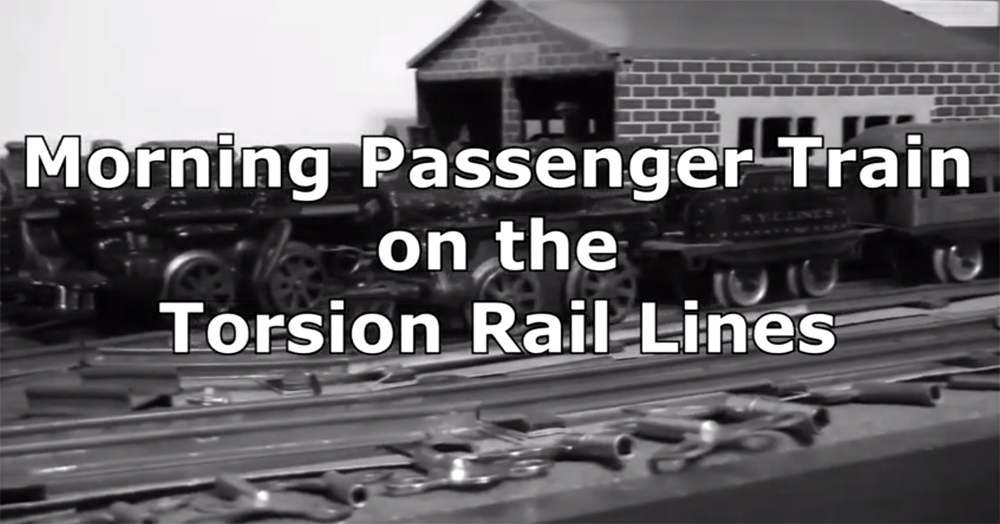
Name: James Pekarek Forum User Name: JamesP Railroad Name: Torsion Rail Lines Scale: O gauge Theme: Clockwork Train Layout Description: An American Flyer clockwork locomotive leaves the engine terminal to pick up a passenger car at the Girard station and make the morning trip around the Torsion Rail Lines. […]
Read More…

Name: James Pekarek Forum User Name: JamesP Railroad Name: Torsion Rail Lines Scale: O gauge Theme: Clockwork Train Layout Description: An American Flyer clockwork locomotive leaves the engine terminal to pick up a passenger car at the Girard station and make the morning trip around the Torsion Rail Lines. […]
Read More…
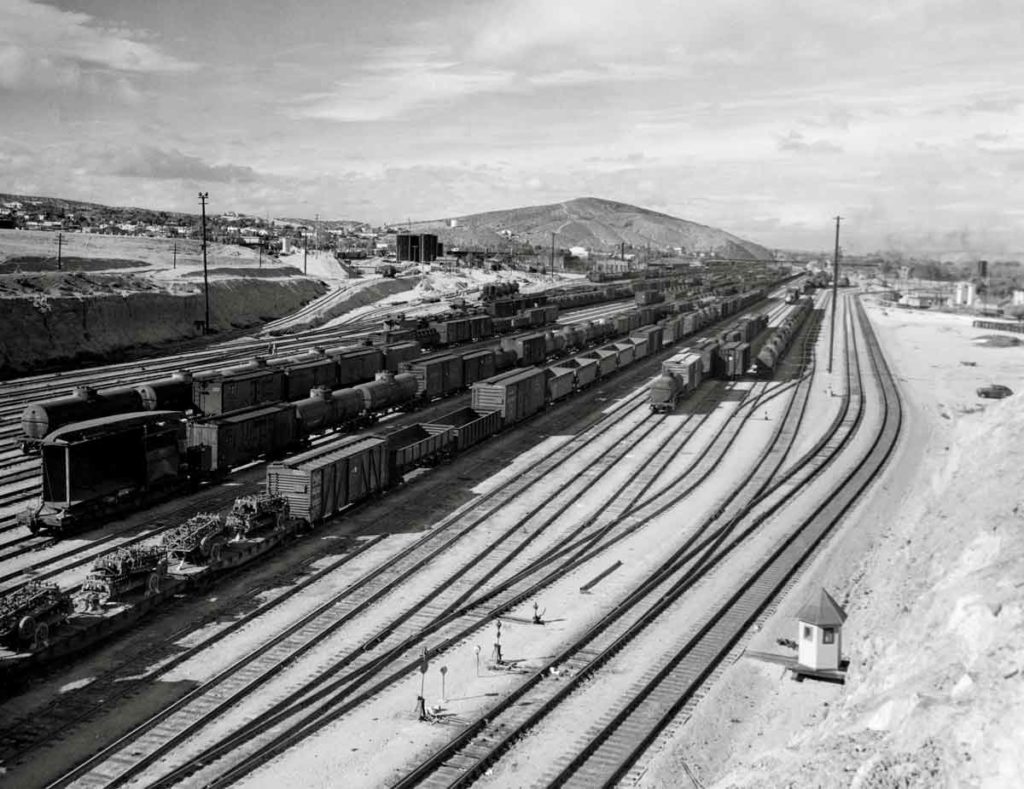
An early-1904s view of the Santa Fe’s big freight yard at Barstow, Calif., shows, at the left side of the photo, war materiel on flatcars. Santa Fe photo […]
Read More…
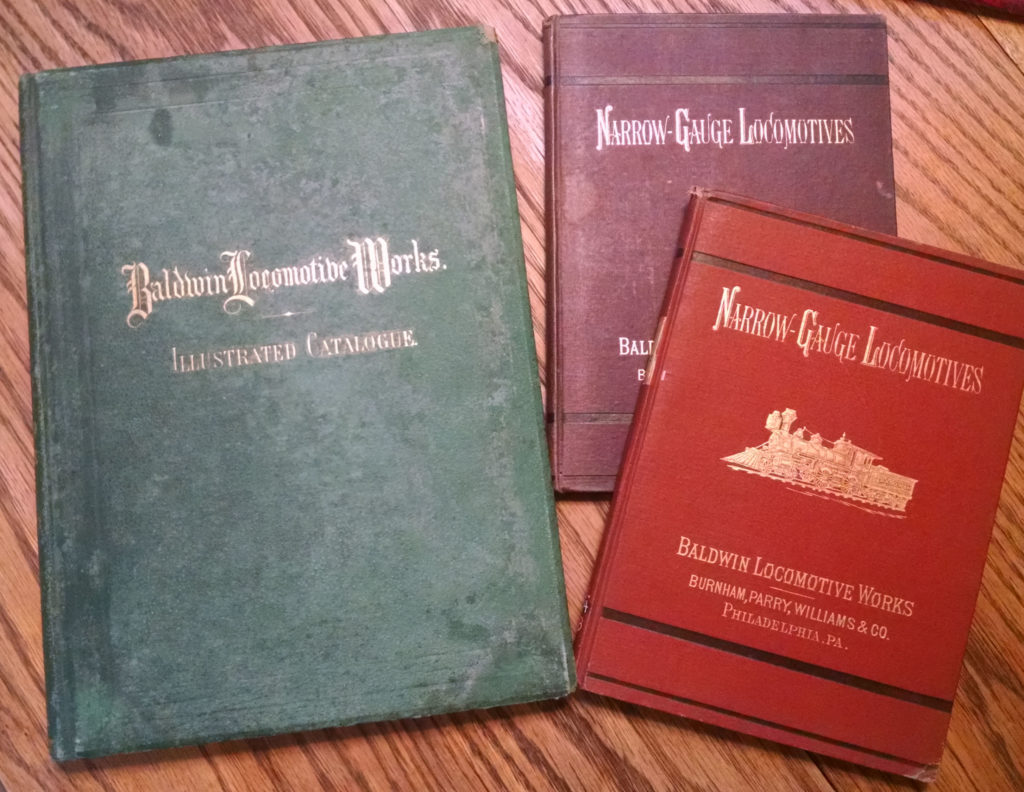
Here are some additional interesting details from three early Baldwin catalogues in my collection, plus some more info about the facsimile I made of the rare and elusive 1885 Illustrated Catalogue of Narrow-Gauge Locomotives. Note: Click on any of the images to enlarge. The covers of three early catalogues from Baldwin Locomotive Works. The large […]
Read More…

Here are some additional interesting details from three early Baldwin catalogues in my collection, plus some more info about the facsimile I made of the rare and elusive 1885 Illustrated Catalogue of Narrow-Gauge Locomotives. Note: Click on any of the images to enlarge. The covers of three early catalogues from Baldwin Locomotive Works. The large […]
Read More…










